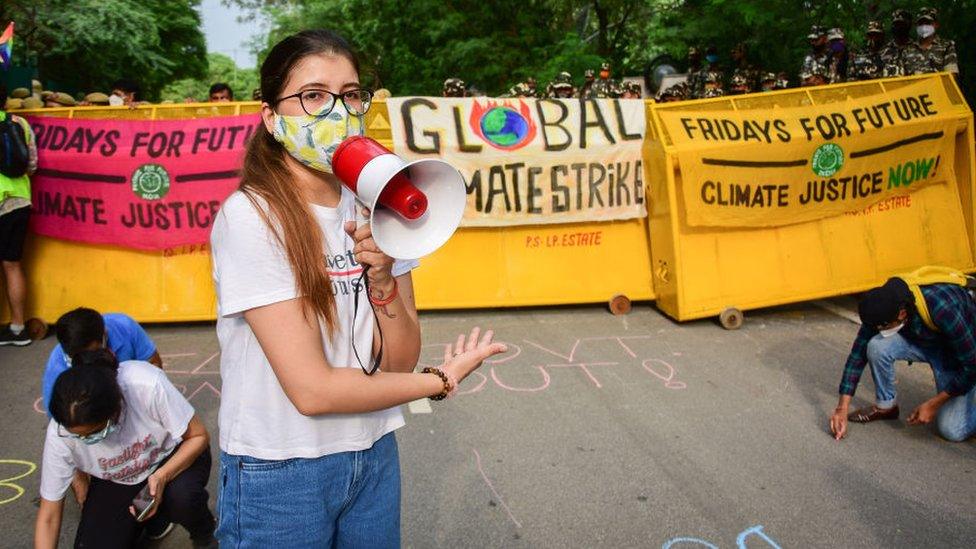Chennai rains: Can the city withstand another urban flood?
- Published
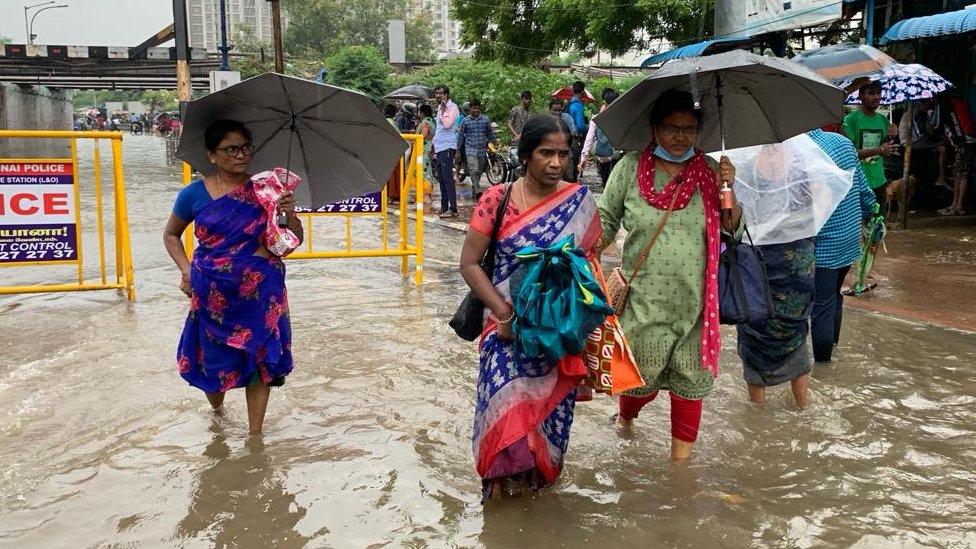
On 1 November, Chennai recorded its heaviest rainfall in more than 30 years
Seven years after devastating floods killed more than 400 people in the southern Indian city of Chennai, the region is witnessing severe rains that are becoming harder to predict. BBC Tamil's K Subagunam finds out if the city is equipped to deal with the impact of changing weather patterns.
Schools and colleges have been shut in Chennai for the second time in November after heavy rains lashed the city on Friday.
Videos showed people wading through muddy waters which flooded the streets and residential areas of the coastal city of 12 million people.
Authorities are on high alert as more heavy rains are expected in the coming days.
The deluge comes just 10 days after the city recorded its heaviest rainfall in more than 30 years on 1 November.
At least 26 people have died in rain-related incidents since 31 October.
Experts say the rains have not only become more frequent but also more unpredictable, making it hard for authorities to respond rapidly.
"No one could have predicted that the city would receive 140mm of rainfall in 24 hours right at the onset of the monsoon season earlier this month," says Dr S Janakarajan, the president of South Asia Consortium for Interdisciplinary Water Resources Studies.
"It was an unexpected weather event where forecasts changed from morning to evening."
The state authorities tried to control the situation by bringing out motor pumps to clear waterlogged areas and sending its relief teams to flood-affected neighbourhoods.
But as sea levels rise and heat waves intensify, experts say the city will need to do a lot more to mitigate the impact of extreme weather conditions in the future and to avoid a repeat of the deadly floods in 2015.
"The fact that water entered people's homes at the very beginning of the monsoon season shows just how unprepared Chennai is this time," says SA Haris Sultan, a member of anti-corruption watchdog Arappor Iyakkam based in the city.
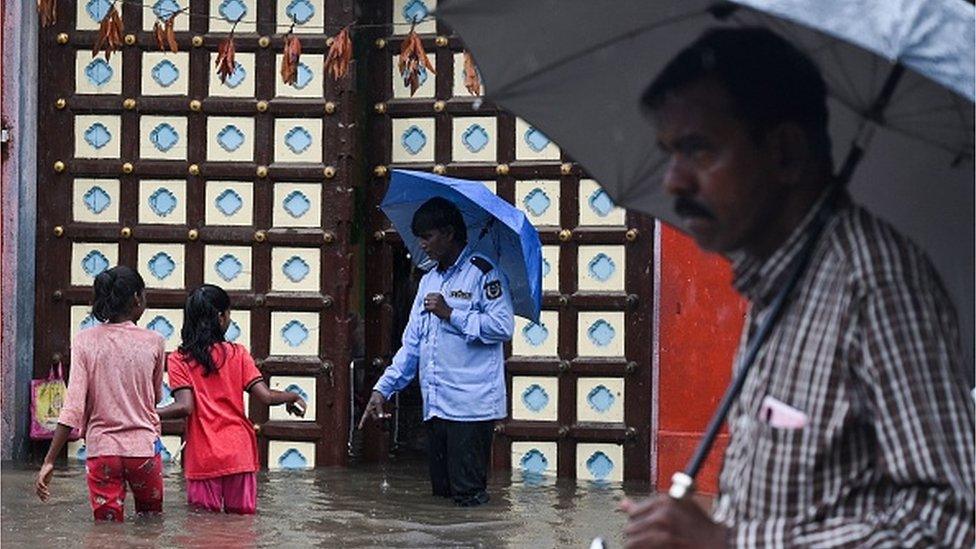
Heavy rainfall is predicted in Chennai and other parts of Tamil Nadu state till 14 November
Located on the coast of Tamil Nadu state, Chennai is one of the largest cities in India.
The city is also a hub for industrial production and automobile manufacturing.
Unlike a majority of India - which depends on southwest monsoon in June for rains - the months of October and November are the primary monsoon season for Chennai.
The city depends on the rains to manage its water needs during the summer months.
In 2019, the city witnessed a severe drought and was forced to bring in 10 million litres of water per day from other districts to mitigate the crisis.
But geographically, Chennai lies on a low-lying plain - with most parts of the city just two to five metres above sea level.
In its latest report, the United Nations' Intergovernmental Panel on Climate Change (IPCC) named Chennai as one among 20 coastal cities in the world that are expected to face major flood damage by 2050.
A lead author of the report warned, external the city would face a "double whammy of heat and humidity, and cyclones" as temperatures rapidly rise in South Asia.
To prepare for the monsoon season this year, the local government carried out an ambitious project to build storm water drains - which would collect excess rains from the streets and drain them into the sea.
But within three days of heavy rains in the first week of November, the city was entirely flooded, bringing life to a standstill.
Climate scientist Dr Roxy Mathew Koll says the city faltered in dealing with the situation because of the increasingly erratic nature of monsoons.
"We now have short episodes of strong wind bursts and heavy rains which are less predictable and challenging to even monitor, let alone forecast," he says.
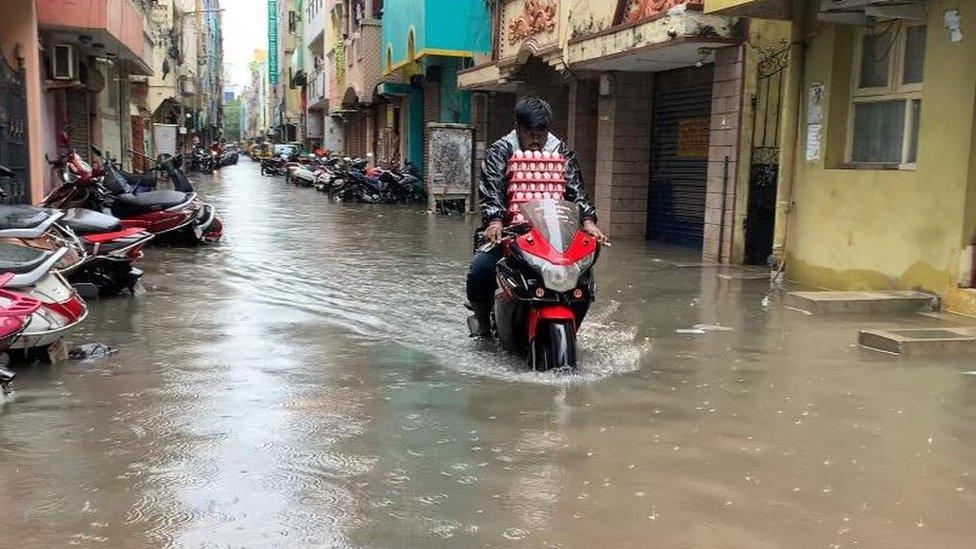
Monsoons in the south Indian city have become more erratic and harder to predict
Others experts say that the city's current drainage system and groundwater structures are inadequate to stop widespread waterlogging and to store rainwater for summers.
"Most of Chennai has become buildings and roads," says L Elango, a professor of geology at the city's Anna University.
Over the past decade, Chennai has witnessed large-scale construction and rapid industrialisation - much of which has grown without a plan and with no regard to water flows, and without anticipating extreme weather events.
According to data from the State Planning Commission, more than 80% of land is under construction in the city.
Prof Elango says that building massive storm water drains and groundwater recharge structures offer little benefit, as Chennai's concrete topography prevents water from going underground.
"Instead, the city's administration should focus on integrating drainage systems of buildings and streets to connect them to reservoirs," he says.
Increasing frequency of the rains has also meant that forecasting agencies and disaster response forces have less time to respond to the crisis.
"Cyclones that used to take two to four days to develop from a weak storm to an extremely severe cyclone are now intensifying in less than a day's time," Dr Koll says.
That's why, he adds, the government needs to formulate long-term policies that "help coastal communities adapt to intensifying storms and rising sea levels".
"We might need to redesign cities to create more open spaces and take measures for the flood water to sink."
Prof Janakarajan agrees - he says the city needs to construct more rooftop structures to harvest rainwater and store it underground.
"If that is done, Chennai will not only be flood-resilient but also drought-resilient."

Read more India stories from the BBC:

- Published10 August 2021
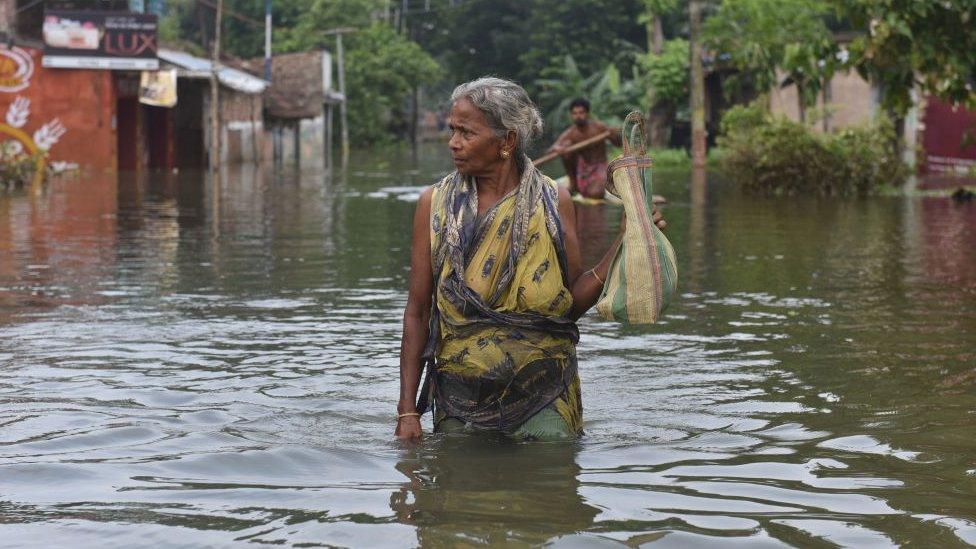
- Published9 November 2022
